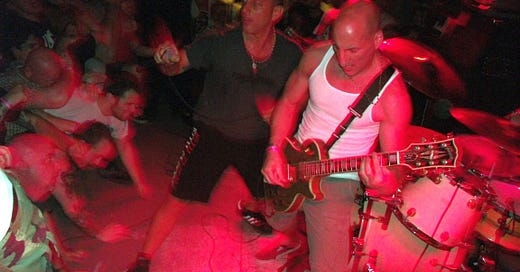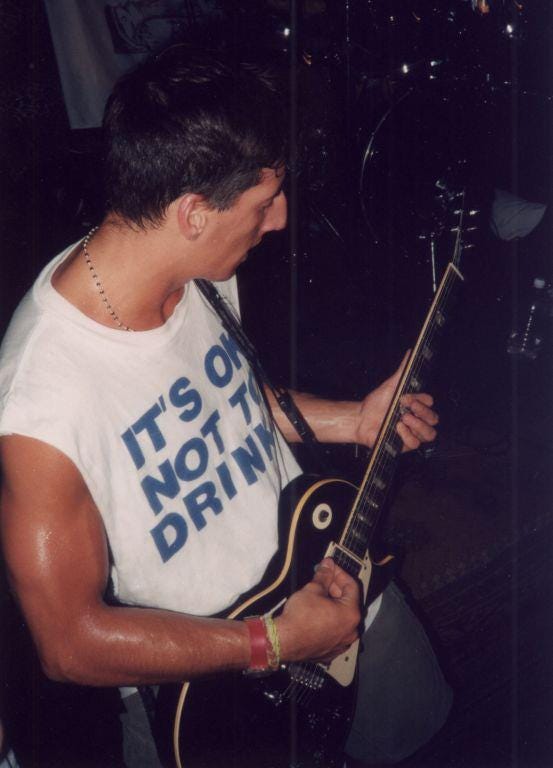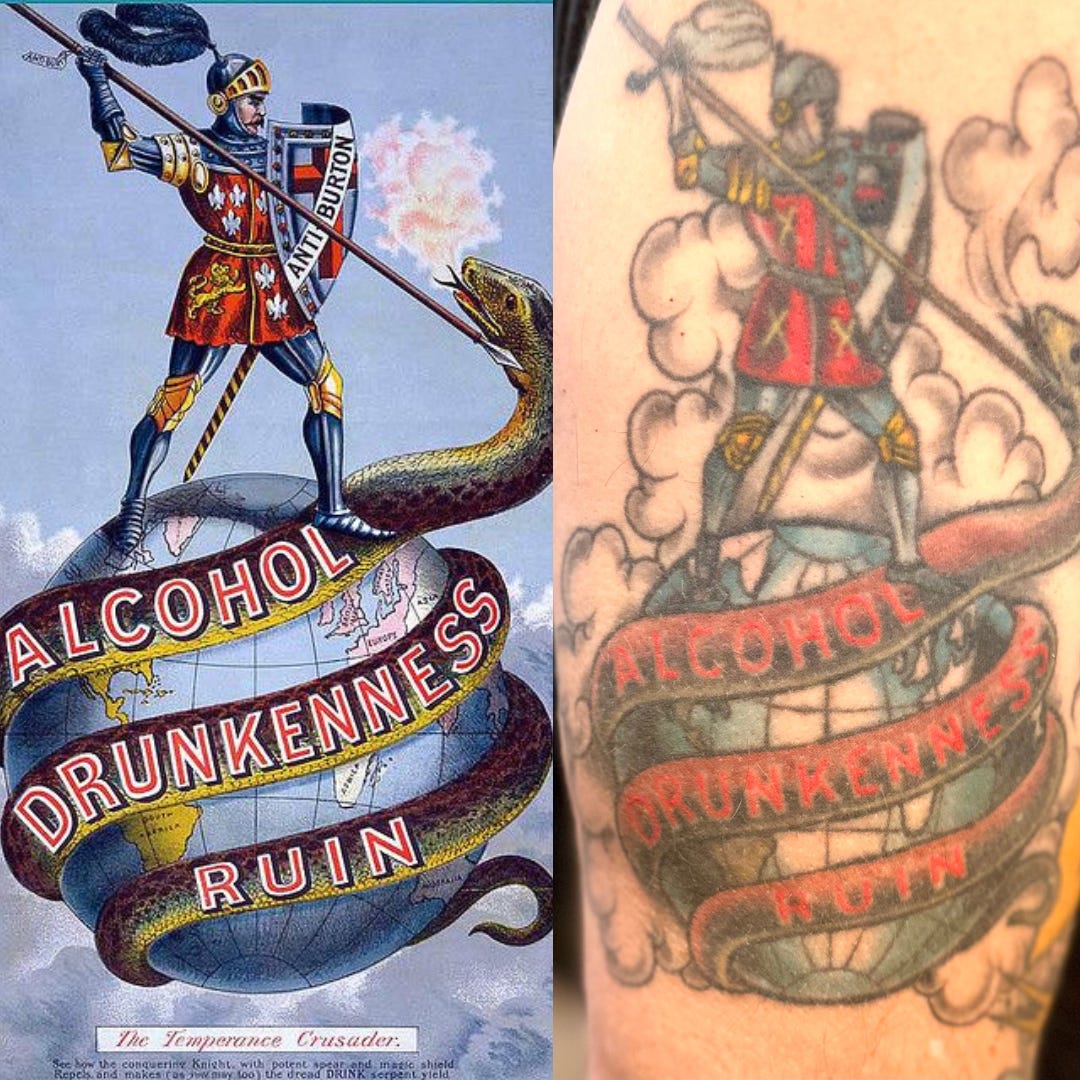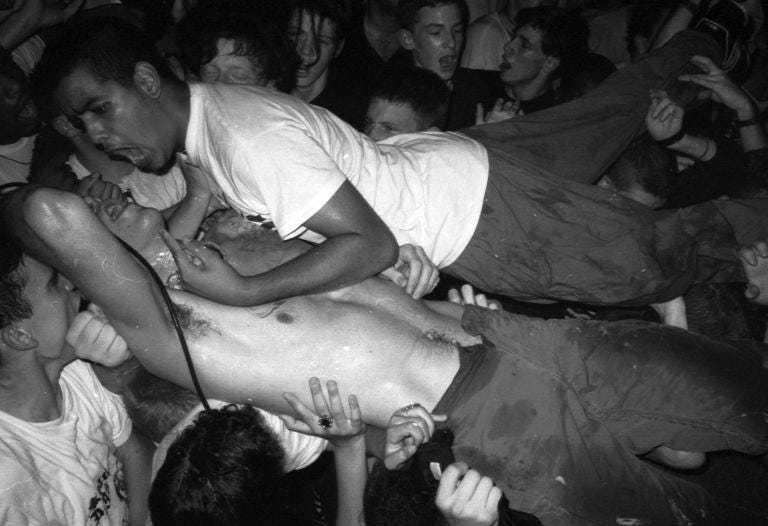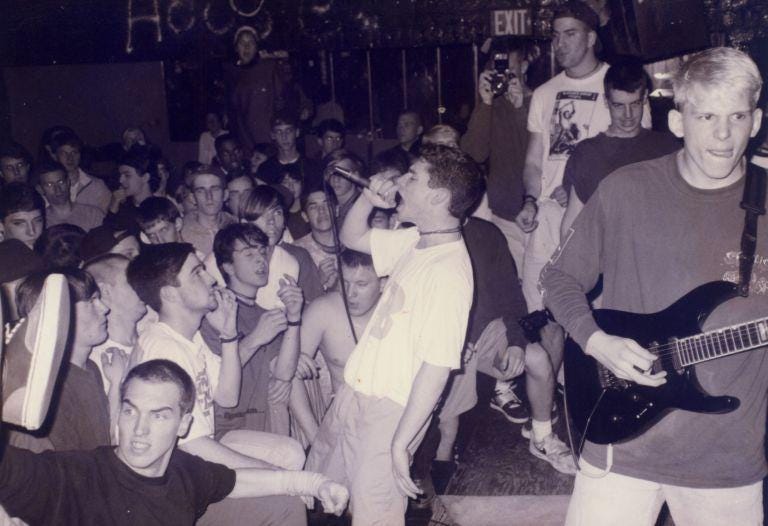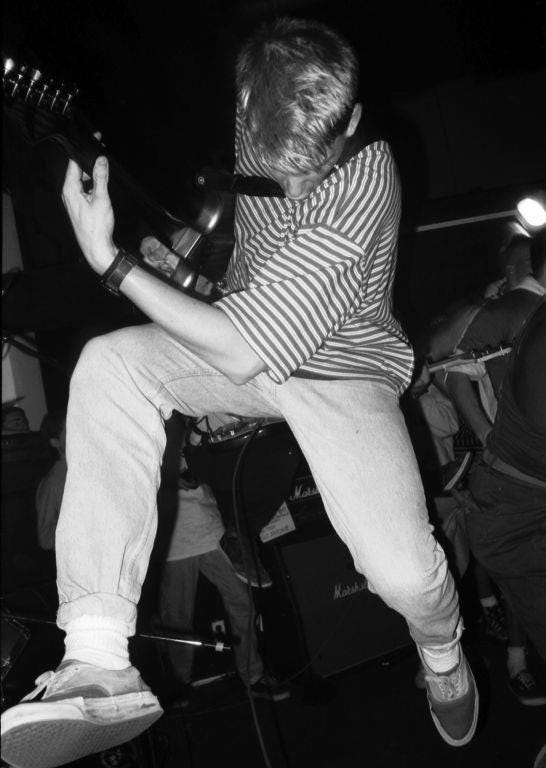My Heart (Still) Belongs to the Edge
Though the X's on my hands are gone, Straight Edge hardcore has left an indelible mark on my journey into mindful drinking.
I absolutely needed it.
The outer tips of the X’s diagonal lines jutting out from a cartoonish heart with a banner emblazoned across the front that read, “My heart belongs to the edge.” I had scribbled this out on a lined piece of paper in my notebook and thought it was a masterpiece.
My fourteen-year-old fantasy was to get this as a tattoo, and I was certain it would set me apart from my peers as a true believer in Straight Edge. Someone who embodied the Straight Edge philosophy, a movement rooted in hardcore punk rock that called for abstinence from cigarettes, alcohol, drugs, and sometimes casual sex. A philosophy that I would carry with me throughout my life and rediscover when I needed it most.
Straight Edge in the “Murder Capital”
Straight Edge sounds like a parent’s dream until you realize it includes your teenager hopping on the Z2 bus to head downtown in the “Murder Capital” of the United States—Washington, D.C.’s nickname in the 1980s—walking by people openly selling and using drugs, to join a gaggle of misfits with shaved heads and boots whose plan for the day was to listen to aggressively loud music and slam into each other. And, of course, get tattoos. (This is the late 1980s, before most moms and dads had a tattoo.)
I had conceptualized my tattoo after seeing Straight Edge hardcore band Zero Tolerance play and plucked the sincere if not corny line—“My heart belongs to the edge”—from their song Bad Blood. Its chorus stuck in my head along with the tinny reverberations of the guitar and quick gunfire-like strikes of the drum snare.
Later that evening, I presented an argument to my mom of why I should get the tattoo, and what it meant. She looked at my crude drawing and, rather than say no, she said, “Why don’t you wait until you’re 16 years old, and I’ll buy it for you.” She knew better. By 16-years-old I had abandoned Straight Edge and moved on to drinking and drugs, dropping out of high-school and leaving my family home. I started working in restaurants and, after bouncing around for a decade trying to figure out my life, ended up bartending, where I launched my career.
However, I hadn’t forgotten to whom my heart belongs.
“Alcohol, Drunkeness, Ruin”
A little after the age of forty, I decided to get my first Straight Edge tattoo. I hadn’t fully committed to sobriety but, perhaps, I unwittingly knew it was coming. I had become a nationally renowned bartender and even opened my own cocktail bar, Columbia Room, which drew many high-level awards including “Best Cocktail Bar in America.” Yet alcohol and drugs were no longer serving me as they had, which I’ve detailed elsewhere.
Mid-life crisis or just remembering the core of who I am, it’s hard to tell. Maybe they both collided. But I chose a graphic from a temperance poster that features a knight battling a snake, which represents alcohol, wrapped around the world. The banner reads: “Alcohol, Drunkeness, Ruin.” Part of that was intended to be ironic, part of that was just true.
Either way, it was a tad more artistic and mature than the tattoo I had originally conceived. Still, I asked the tattoo artist to add X’s to the knight’s vest as a tribute to my youth.
Shark Week vs. Hardcore Shows
Now, when I attended my first Straight Edge hardcore show, it was nothing short of revelatory. I had been listening to hardcore punk for a few years but had not yet experienced it live. And, let’s be clear, listening to hardcore and watching it live is the difference between watching Shark Week from the comfort of your own couch and being submerged in shark-infested waters.
While hardcore on your home speakers or car stereo is mostly unintelligible lyrics shouted over what sounds like chainsaws and lawn equipment, hardcore live is a ritualistic orgy of testosterone, mock battle, and angst. Participants circle or sway back and forth, stomping, swinging their arms, and shout along to the call-and-response style choruses from the bands. Some occasionally bolt onto the stage, waggle a little in front of the band, and leap into the audience.
It may well have been dangerous, though certainly not as dangerous as shark coves thanks to everyone looking out for each other. If you fell in the “pit,” as we called it, or leapt from the stage, there was always someone to catch you and pick you up.
“Stop I've Had Enough”
My friend and poet, Glenn Burns (who also coined the term “positive damage”), told me about the first show I ever attended while we were both stuck in summer school. The band Gorilla Biscuits was headlining. And, even if big acts at the time like Aerosmith or Janet Jackson had invited me backstage for their concerts, I wouldn’t have been more excited. Rock and R&B music seemed boring and inaccessible to me. Hardcore was immediate and visceral.
My connection to hardcore wasn’t as simple as rage, though that was certainly part of it. The music, the anger, and even the positivity—much of the message was geared toward overcoming your problems—spoke to parts of me trapped in time by trauma: the grief from the death of my foster sister, the heartbreak of my father’s absence who left when I was a toddler, and the abuse I suffered from my step-father.
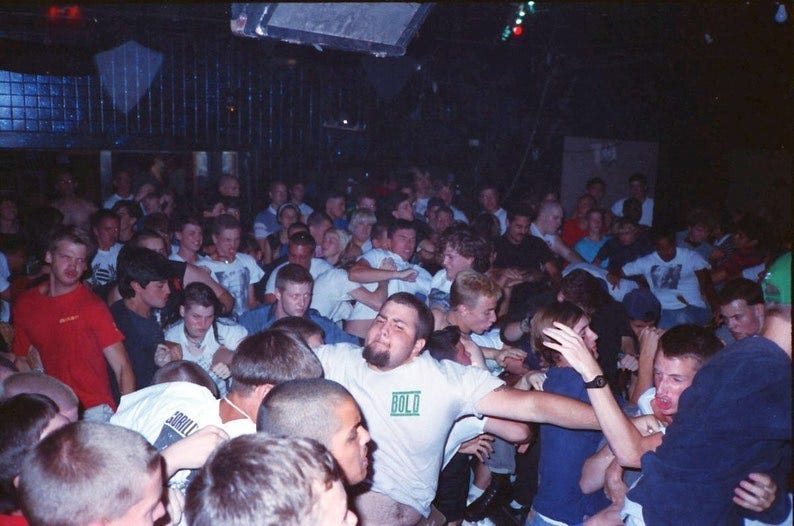
What hardcore did for me was tell me that it wasn’t alright when everyone else told me it was.
I lived in the suburbs and the mentality of suburban life was that someone else always had it worse. You were lucky to have a roof over your head, food on the table. And, to an extent, that’s true. But it’s also far more complicated.
When Turning Point, a Straight Edge band from New Jersey, sang:
I've stumbled and fallen down before
Again I feel myself falling
Please stop I've had enough
Stop I've had enough.
You can read that as bad poetry depicting suburban angst, or you can imagine it being recalled by a young teen being kicked repeatedly by his step-father after his step-father swung at him and he fell to the ground.
I had no modality to deal with the alienation and hurt I felt from being not only rejected but violently attacked by someone I relied on for my very existence. Hardcore offered a home for my pain. When I shouted the words along with a room full of people, I felt vindicated, and I was no longer isolated or afraid.
DIY (Do It Yourself)
Hardcore didn’t necessarily make things better for me; it taught me that I wasn’t alone. But it also taught me I could make things better for myself.
As I listened to the songs more, the messages of positivity, friendship, inclusion, and a commitment to yourself, took the place of the lessons my parents never taught me. Or that I just couldn’t hear amidst the arguing, violence, and pain. By the time I heard: don’t drink, do drugs, or fuck. I was sold. The generation before me did all of that and they were seemingly miserable. I wanted no part in their schemes for happiness.
Of course, things are far more nuanced when you grow older. I now understand that as a father myself (though I absolutely cannot condone violence against children). Not only are you expected to guide your kids, but you’re often given poor role models and then must play roulette with the myriad philosophies and instructions shared by institutions, friends, and family. For fuck’s sake, Bill Cosby wrote a book called “Fatherhood.”
My parents were stuck in their own trauma but scarcely had the vocabulary to express it. When my father volunteered for the Vietnam war as a young man himself, he likely had no idea how it would affect him. Just as much as alcohol and drugs were schemes for happiness, they were a salve for the pain. We were both trapped in the grief and trauma of our lives and reacted each in our own way. I was lucky, I found Straight Edge.
The person who coined the term Straight Edge in the eponymous song, Ian MacKaye, shares that it was never meant to spark a movement. I get that. But it also doesn’t matter. Things sometimes live outside of our intention. I needed that movement and it changed me. I selfishly cleaved to the simplistic yet heartfelt messages of Straight Edge like Gorilla Biscuits’ Start Today:
Next time I’ll try
for the first time in my life
Won’t pass me by
Procrastinate, it can wait
I put things off
Let’s start today…
And, when alcohol and drugs had taken their toll on my life, I went back to the well with Straight Edge. I didn’t worry that it wouldn’t be cool or that I wouldn’t fit in if I didn’t drink. Or, if I did, my insecurity was short-lived. I imagined leaping out into the crowd that had once supported me before, literally, and drew on their support once again.
Mindful Drinking
Mindful drinking has a similar message. It isn’t about someone else taking control or what motivational scientists call extrinsic motivation (motivation outside of ourselves). It’s about intrinsic motivation, a choice you make for yourself. It’s a commitment to being the best version of yourself that you can be. And, when you stray from your goals, being resilient and getting back on track. There is often more than one shot at this thing called life
But, unlike Straight Edge, it isn’t always about abstinence. For now, I’ve chosen to stop drinking alcohol, and I’ve replaced it with many delicious non-alcoholic beverages. But I can drink alcohol anytime I want. As the Orange County, California Straight-Edge band Insted sang in their song, Choose for Yourself, it’s my choice.
In many ways, I have Straight Edge to thank for that. And though I never got the exact tattoo I wanted when I was 14 years old—and I don’t intend to—I also don’t need it. I’ve cribbed the lessons from Straight Edge and carry them with me today where there’s something much deeper ingrained than ink in my heart.
All the show photos come from my very talented friend, Dave Brown. Buy his book “Adult Crash 2: A Hardcore Punk Photobook.”
Below is a short playlist with some of the biggest anthems of late-80s Straight Edge hardcore, along with some of the songs I mentioned in the article.
Also, check out Tony Rettman’s book “Straight Edge: A Clear-Headed Hardcore Punk History” and his Substack
to learn more about hardcore.
Derek Brown is an author, NASM-certified wellness coach, and founder of Positive Damage, Inc.
This newsletter is free and public. Share with anyone you think will enjoy it.


